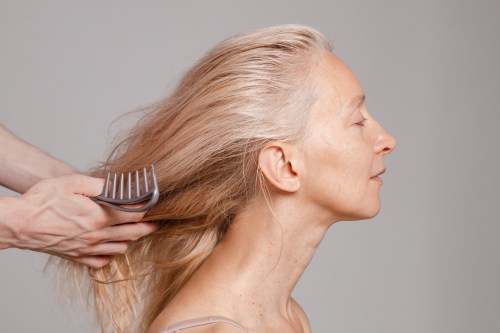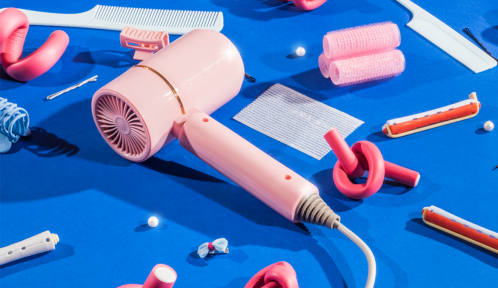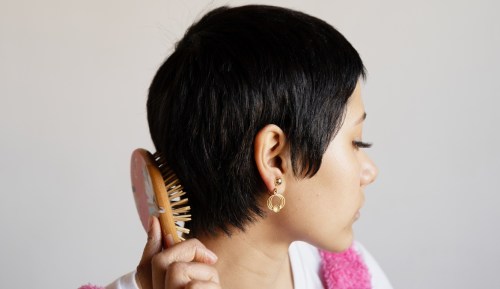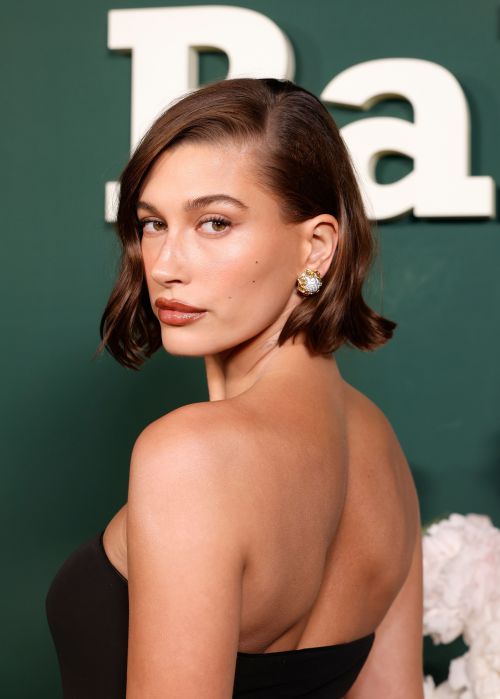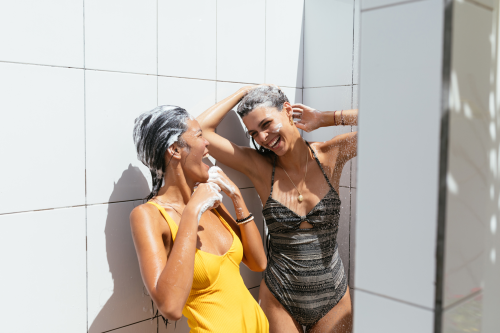There is a long-held belief that natural hair cannot be bleached. Because curly and coily textures are prone to dryness, many in the hair-care industry have held that these textures are too fragile to lighten. But according to experts, it can be done. With the right care and maintenance, two hair pros Ilana Everett and Doug Jackson assure those with natural hair that curls can thrive in all of their blonde glory.
Experts in This Article
Most people know that bleaching chemically relaxed hair is very risky, as it’s putting chemicals on top of chemicals. However, the experts I spoke with say natural hair, without a relaxer or texturizer, can still maintain its healthy curl pattern, despite the chemicals that are added during the bleaching process. It’s just a matter of doing so as safely as possible and taking measures to revitalize the hair. Keep scrolling for all of the intel that you’ll need before you hit up the salon chair, what to expect during the treatment, and how to keep your hair healthy long after it’s been dyed.
Prepping your hair before the bleaching process
Everett and Jackson both agree that hydration and moisture are key to understanding whether or not your hair should be bleached. “[One] way you can protect the hair before bleaching is by doing moisture treatments with moisturizing shampoo and conditioner, [as well as] hot oil treatments, [and get] a good trim to make sure the hair is in healthy condition and isn’t dry, brittle, frizzy, or breaking,” says Everett. “If any of these things exist, postpone bleaching until your hair is in a better condition.” And Jackson echoes this saying that, “hydration is key.”
Jackson points out that many non-Black people (with type one or two hair textures) wash their hair every other day, and get consistent hydration through things like in-shower conditioners. “That’s why they’re able to color their hair so frequently, because they’re getting hydration, versus Black people [typically] will wash hair every two weeks if they have their hair in a particular style. It might be every month, every two months, depending on the natural style they’re using.”
He illustrates that many people with natural hair believe that they can go from hair lacking hydration to healthy hair by just doing a deep condition, but it seldom does enough to make up for the lacking hydration that exists on a daily basis. Consistent moisture and hydration, as Everett points out through conditioners and oils, are important for general natural hair upkeep; however, these are especially important when it comes to preparing natural hair for bleaching, which does dry hair out more.
What happens during the bleaching process
The bleaching powder, developer, and the integrity of your hair all affect how long the bleach will need to stay on your strands. The first time consideration depends on the color of your hair pre-bleach, and how light you want it to be after the treatment. Jackson is quick to state that the developer used in many dyes (commonly hydrogen peroxide) has to appear at higher concentrations depending on the amount of hair lightening that needs to take place. He cautions people with natural hair to avoid higher developer concentrations, like 30 or 40 percent, because these are more likely to damage coarser hair textures. “The higher the lift [or the lighter the color you’re trying to reach], the higher the volume of peroxide, and the higher the possibility of damage,” says Jackson.
Next, hair texture and the health of hair should be considerations for how long the bleaching product stays on hair. “Finer hair uses less time as opposed to thicker more dense hair, and you must consider the integrity of the hair,” says Everett. “The healthier the hair, the longer the process will be. You should check the hair periodically if you don’t want it to overprocess and start to feel like seaweed.” If all of this seems like a lot to take in, make sure to go to a hair colorist, who can help you navigate the process.
Whether at home or with an expert, try out how your scalp will react to the product, by selecting “the desired color you want and then do a patch test. A patch test is taking a small amount of hair—a nickel size—about an inch behind the ear to determine if you’re allergic to the product or the color mixture.” For virgin hair (that is, hair that has never been bleached), instead of starting off with the product immediately, he recommends starting with a lifting deposit. Lift deposit ratios are very common when coloring hair, as they establish the specific pigment levels that someone wishes to achieve for their hair and determines the amount of color lift. Again, by talking to a hair colorist, you can determine what you need for your specific needs.
Protecting natural hair from excess damage
Caring for natural hair after bleaching is extremely vital, as it could be the difference between beautiful and thriving golden curls, and dryness and breakage. “Argan oil is an additive that can be mixed into the bleach that helps with dry hair breakage. Olaplex also helps to restore the hair and strengthen bonds that are being broken down during the bleaching process,” Everett shares. “Moisturizing shampoos and conditioners, Olaplex for restoration, leave-in conditioner, I like the Redken ones, Influence products and my fave is the Nairobi line.”
Since every texture is different, the products you use for hair TLC depend on your hair type and thickness. The key is for fine natural hair not to get weighed down with too much oil build-up and for kinkier hair to be able to sop up the heavy creams and oils like a biscuit. Jackson points out that every texture is different and for those with finer natural hair, oil heavy products will make the hair look flat. “Now, for an individual with big hair, such as myself something real creamy, like the creamier the better—hair mayonnaise,” he says. To keep hair healthy, Everett also suggests regular trims, especially if there are stringy ends (like a relaxer trim) every 12 to 16 weeks, or as necessary. “Last, but not least, color responsibly,” says Everett, “And rock that blonde!”
Oh hi! You look like someone who loves free workouts, discounts for cult-fave wellness brands, and exclusive Well+Good content. Sign up for Well+, our online community of wellness insiders, and unlock your rewards instantly.
Sign Up for Our Daily Newsletter
Get all the latest in wellness, trends, food, fitness, beauty, and more delivered right to your inbox.
Got it, you've been added to our email list.

